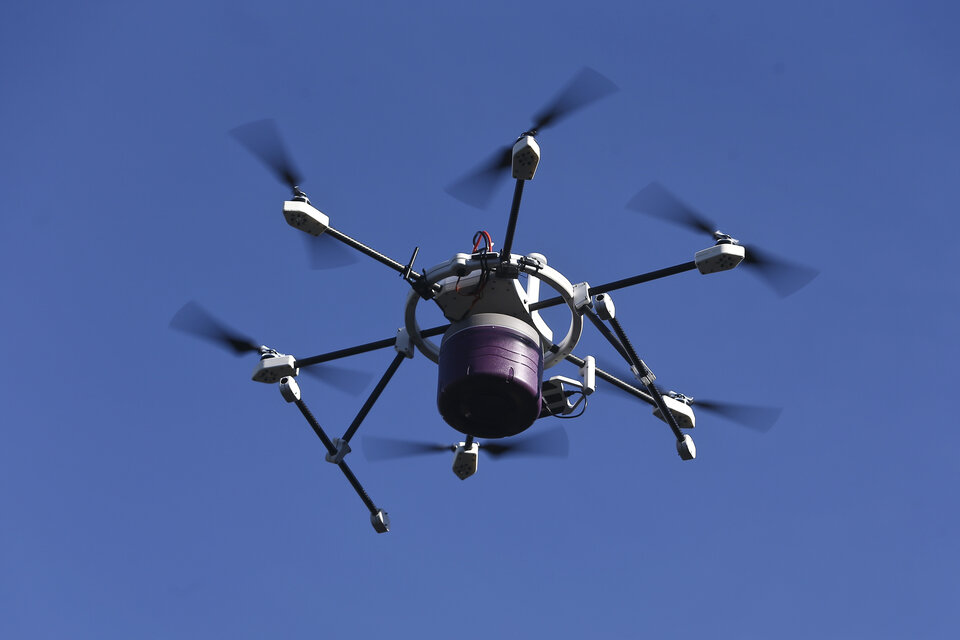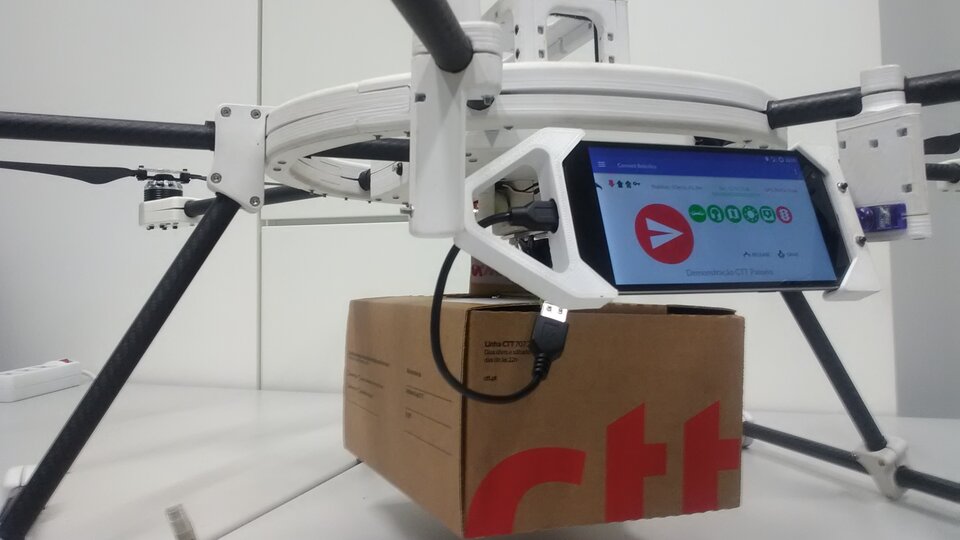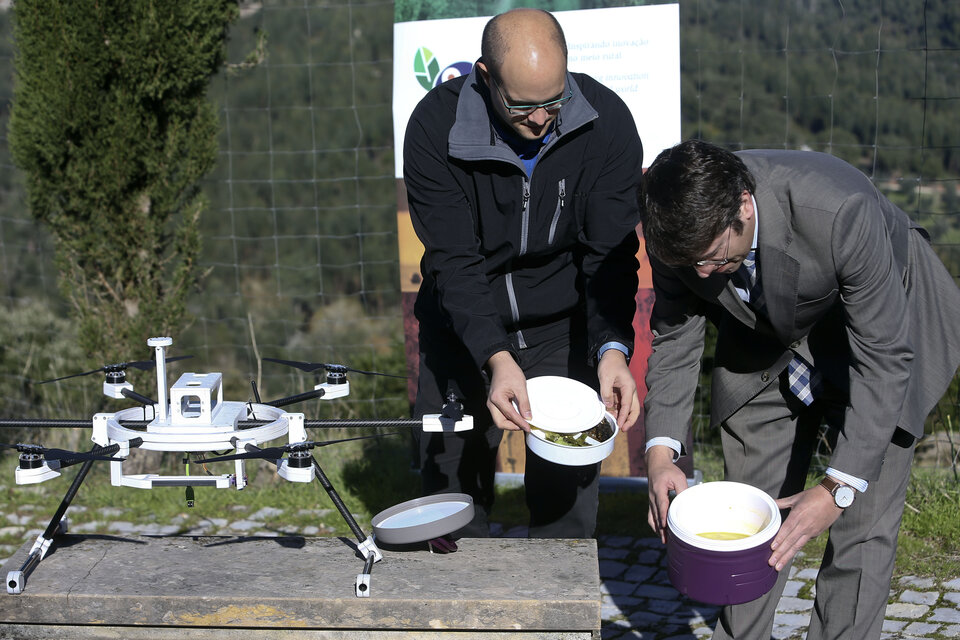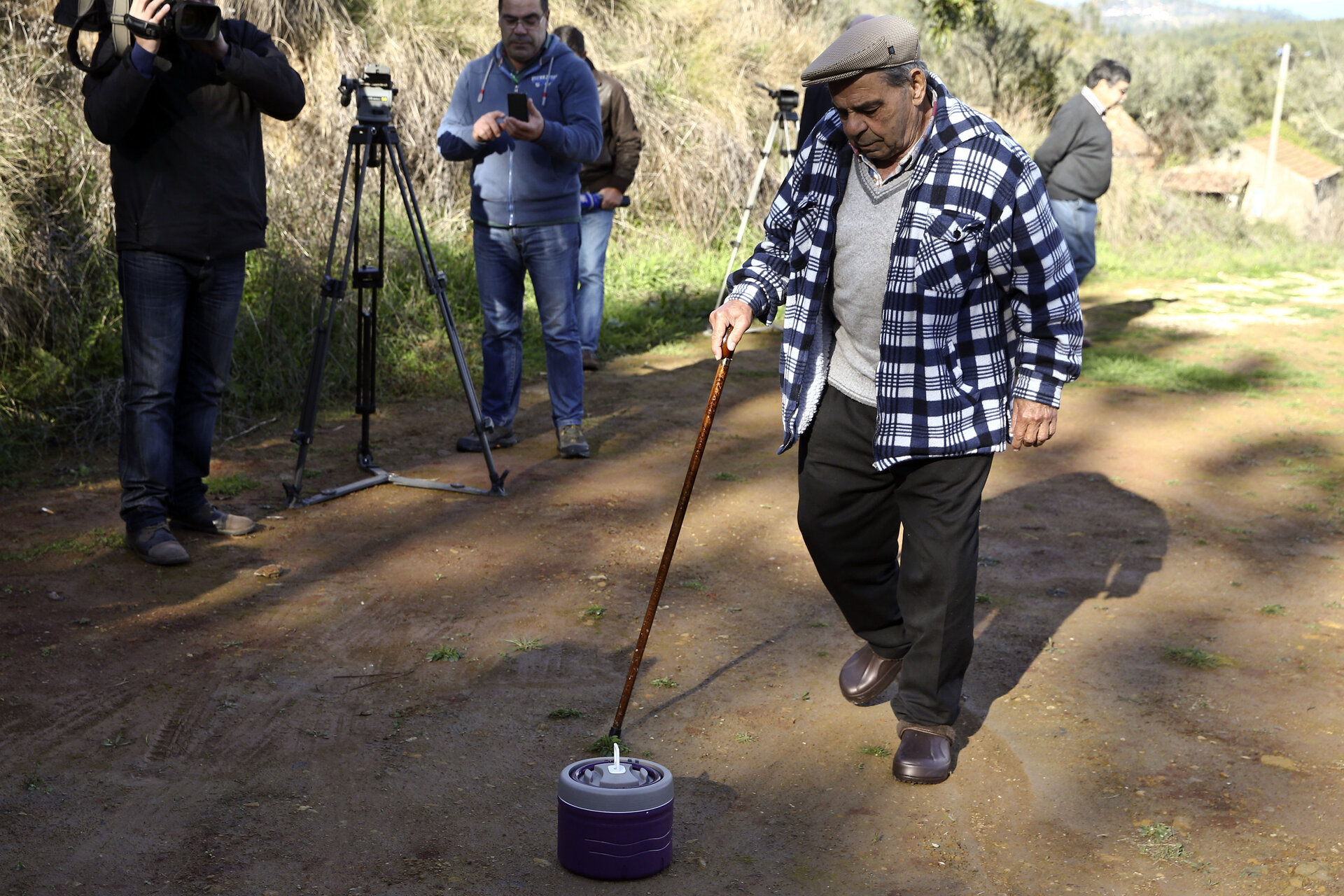The flying kettle
A warm meal was quickly delivered by a drone from an ESA business incubator start-up to the last inhabitant in a remote village in Portugal.
“Even if the village is not far away, it takes a driver by car over half an hour to deliver the meal to Joaquim Reis in Podentinhos and come back due to bad and unpaved roads. Our drone arrived in just three minutes, without the need of a pilot,” explains Raphael Stanzani of Connect Robotics, hosted at ESA’s business incubator in Portugal.
“One operator can handle six of our drones at the same time. The drone takes off by itself, taking care of weather, elevation and flight routes. After dropping the package, it returns automatically.”

Connect Robotics was founded by Eduardo Mendes and Raphael Stanzani in 2015. Eduardo was developing software to control and navigate unmanned aerial vehicles for his doctorate, and decided to turn it into a business.
Motivated by the potential of drones to transport life-saving goods, help people in distress and reduce the isolation of people living in remote regions, they are exploring the ‘last-mile delivery market’, of interest to medical distributors, postal services and retailers, who need fast and reliable deliveries at lower costs.
“We can reduce costs by 40–60% with respect to conventional couriers, so our customers can offer quicker product delivery at a much lower cost,” says Raphael.
“The last-mile delivery can be done within 30 minutes of a purchase because our drones are not hampered by traffic jams, infrastructure under construction, or natural barriers in remote areas.”

In May, Connect Robotics was called upon by the national postal service to deliver a parcel from Cabo Ruivo to their headquarters in Parquedas Nações, Lisbon. The 3 km journey had to be made at an altitude of 30 m because of a nearby airport – and it was completed in only seven minutes.
Eduardo and Raphael are building their delivery service using fully autonomous drones. A smartphone onboard controls the aircraft and connects it via the Internet to a cloud-based server which sets the flight path, follows the drone and shows its position in real time to the operator.
Connect Robotics has been hosted at ESA’s Business Incubator Centre Portugal since mid-2015.

“They are a great example of an idea from young entrepreneurs being tested as a new business case, and already proven its value,” stresses Carlos Cerqueira, the incubator’s coordinator.
“Working with ESA appeared to be a must,” emphasised Raphael. “We now use Galileo to improve the location accuracy and use space mission protocols and methodologies to analyse navigation, data gathering and communication.
“We gain confidence from clients and partners from being part of an ESA incubator, where we also receive technical and business support to build up our drone service.”

They use drones from several makers, including a custom-made vehicle from the SleekLab start-up, now incubated at the Pedro Nunes Institute in Coimbra, which runs the ESA centre in Portugal.
Having a programmable onboard smartphone is what makes Connect Robotics capable of controlling drones from multiple manufacturers, and select different drones to accommodate different parcel sizes and delivery requirements.
The company has completed several flights venturing beyond visual range with the postal service but there is still much to be done.

The vision is to develop drone ports, where they land and take off easily, release the packages into storage lockers, generate delivery receipts and automatically charge their batteries.
"Our service is undoubtedly an added value for the distribution of small parcels and health products. A drone is faster and cheaper than a courier van, and does not require a driver,” notes Eduardo.
“We believe that this will become the most widely used method for distributing small commodities in the near future."





